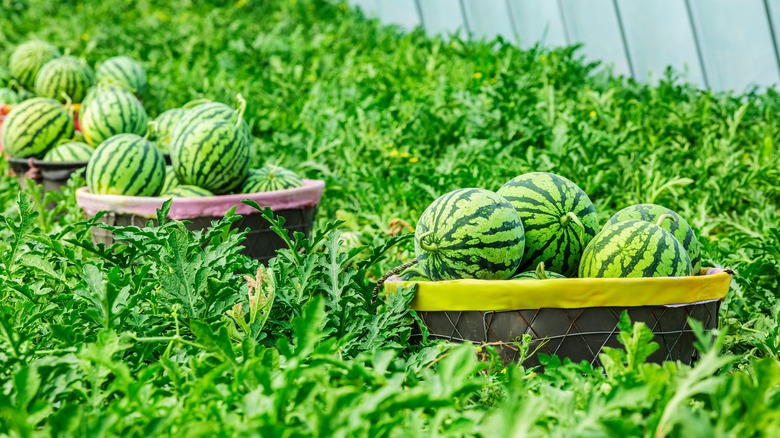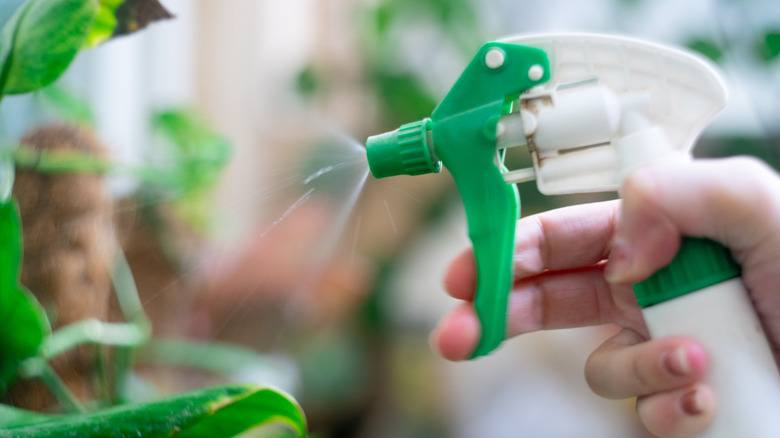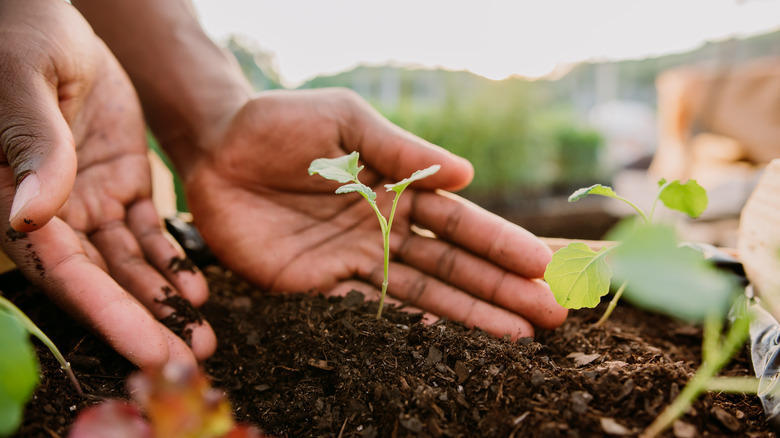Is Epsom Salt The Trick To Sweeter Watermelons In Your Garden?
With spring in full effect and summer not far behind, everyone will be dusting off their favorite popsicle and fruit salad recipes, and watermelons are bound to be on everyone's shopping list or growing in the garden. Nothing kills the fun like biting into a bland and sandy watermelon. Magnesium deficiency isn't an uncommon condition in many fruits, vegetables, and even trees. Even though it's not necessarily harmful, it can affect the taste of fruits and vegetables, making them taste flat or overly ripe.
Adding Epsom salts can save your magnesium-deficient soil and improving the nutrient content of your soil can make your watermelons taste sweeter. Epsom salts, also known as magnesium sulfates, are effective in helping to fight magnesium deficiency in your soil. Magnesium deficiency is caused by a mineral imbalance in the soil which can result in a lack of magnesium or other nutrients. Spraying an Epsom salt solution can help balance the minerals in the soil and make your watermelons sweeter.
How to use Epsom salt for sweeter watermelons
Using an Epsom salt solution before you're sure that your soil is magnesium deficient could be counterproductive, causing harm to the soil and your plants. In watermelons, a magnesium deficiency can be identified by the yellowing and browning seen in the leaves as well as the light greenish-yellow tones on the skin. The best way to determine whether your soil has a magnesium deficiency is by doing a soil test in your garden or sending a sample to be tested at your nearest extension office. Depending on whether you use a long-term or short-term approach to address a magnesium deficit, Epsom salts can either be sprinkled directly onto the soil or sprayed as a liquid solution.
Mixing the Epsom salt solution is a fairly simple process. Mix 6 ½ tablespoons of Epsom salt with 3 ½ tablespoons of household borax in 5 gallons of clean water. Borax contains boron, another essential nutrient that contributes to the sweet taste of watermelon. Shake the solution and spray over the leaves every two weeks as a foliar feed if you're going for a short-term approach in no more than three intervals. For a long-term approach, spray towards the roots allowing for 1 ounce of the solution per square yard. It's important to keep up with a good watering schedule to prevent the solution from sitting on the topsoil.
Don't make a bad situation worse
It's important not to exceed the recommended doses when spraying or sprinkling your Epsom salts solution. Plants can only use up so much of the minerals and nutrients put into the soil, the rest of it remains in the topsoil and acts as a pollutant that can slow down your watermelon's ability to absorb calcium. The University of Minnesota warns against the overuse of Epsom salt because it can cause leaf scorch and seriously harm the soil.
It's also important to note that while Epsom salts can help sweeten fruits and vegetables like watermelons, apples, tomatoes, carrots, and beets, it's not suitable for all plants. Studies have shown that plum and pine trees don't respond well to Epsom salts and the solution doesn't do much to improve the taste or texture of its fruit. In cases where the soil is exceptionally sandy or acidic or where the soil pH is below 5, a soil fertilizer such as dolomite lime, magnesium oxide, or potassium magnesium can be used to raise the soil's pH as well as to effectively supplement magnesium. Besides making watermelons sweeter, Epsom salts can be used around the home to improve the look and health of your indoor plants as well as to repel unwanted bugs like cockroaches.


